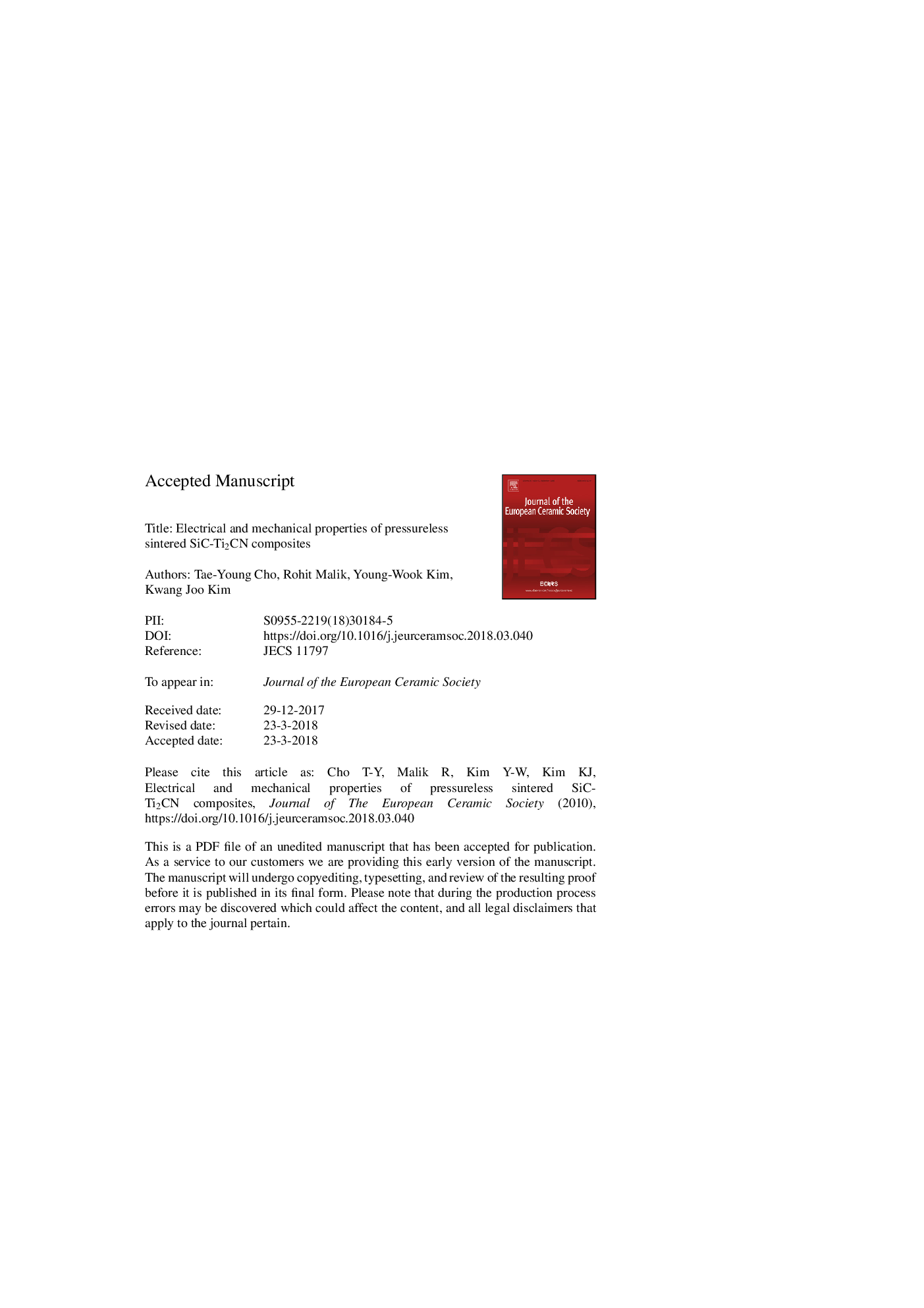| Article ID | Journal | Published Year | Pages | File Type |
|---|---|---|---|---|
| 7898108 | Journal of the European Ceramic Society | 2018 | 39 Pages |
Abstract
Highly conductive SiC-Ti2CN composites were fabricated from β-SiC and TiN powders with 10â¯vol% Y2O3-AlN additives via pressureless sintering. The effect of initial TiN content on the microstructure, and electrical and mechanical properties of the SiC-Ti2CN composites was investigated. It was found that all specimens could be sintered to â¥98% of the theoretical density. The electrical resistivity of the SiC-Ti2CN composites decreased with increasing initial TiN content. The SiC-Ti2CN composites prepared from 25â¯vol% TiN showed the highest electrical conductivity (â¼1163 (Ωâ¯cm)â1) for any pressureless sintered SiC ceramics thus far. The high electrical conductivity of the composites was attributed to the in situ-synthesis of an electrically conductive Ti2CN phase and the growth of N-doped SiC grains during pressureless sintering. The flexural strength, fracture toughness, and Vickers hardness of the composite fabricated with 25â¯vol% TiN were 430â¯MPa, 4.9â¯MPaâ¯m1/2, and 23.1â¯GPa, respectively, at room temperature.
Related Topics
Physical Sciences and Engineering
Materials Science
Ceramics and Composites
Authors
Tae-Young Cho, Rohit Malik, Young-Wook Kim, Kwang Joo Kim,
